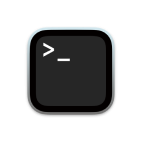Mac Terminal vs. Warp
Warp and the Mac Terminal are both popular terminals that differ in key ways. Warp offers an AI-powered cloud-native terminal solution with seamless collaboration and extensive customization, while the default Mac Terminal is a robust macOS-native terminal that leverages shell scripts and text files to automate functions.
Features

Mac Terminal
Warp
Product Description
Terminal for MacOS (terminal.app) is the terminal included in the operating system by Apple.
Warp is a modern, Rust-based terminal with AI built in so you and your team can build great software, faster.
Tagline
N/A
Your terminal, reimagined.
Founded In
2001 (Mac OS X 10)
2020
Mouse & Cursor Support
No
Yes. Warp’s text input editor is more like a modern IDE with selections, cursor positioning, and completion menus.
AI Integration (Scope & Depth)
Through plugins and external tools
Yes. Warp AI is fully integrated throughout the terminal to suggest commands and make workflows easier.
Collaborative Features
Through plugins and external tools
Yes. Warp Drive is a space in your terminal where you can securely save and share commands as workflows.
Reusable Workflows Or Scripts
Yes, leveraging shell scripts and text files, but is a fairly tedious process
Yes. Workflows are paramaterized commands you can save, share, and run on-demand.
Built With...
Objective C, Swift
Rust
Close Or Open Source
Closed Source
Closed Source
Cloud Enabled
No
Yes
Requires Log In
No
No
Pricing
Free
Free for individuals; Charge for advanced AI or large team usage
Platform Availability
MacOS
MacOS, Linux, Windows
